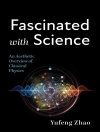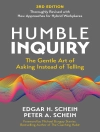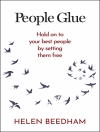‘This is a book every citizen should read.’ -SY MONTGOMERY, New York Times bestselling author of The Soul of an Octopus and editor of The Best American Science and Nature Writing 2019
The rapid and ubiquitous spread of information has failed to remedy one of humanity’s most enduring challenges: making accurate sense of the world. Instead, a constellation of factors influencing how we interact with information-and, in particular, scientific information-has prevented us from digesting and adequately confronting many of the greatest problems of our time, from climate change to pandemics.
The book, an essential read for non-scientists and scientists alike, offers both an analysis of this burgeoning crisis of (mis)information overload and a practical guide for navigating it. Soplop argues that becoming a more discerning and less vulnerable consumer, or producer, of health and science information is critical.
Soplop has created an indispensable primer for reimagining how we think about and communicate what science really entails, including its profound social value and its many limitations. She also presents a series of engaging case studies-the decades-long disinformation campaign to sow doubt in climate change, the schemes in the wellness industry, the push for pseudoscience in the science classroom, the century-old rhetoric of the anti-vaccination movement, and the nation’s unfathomable COVID-19 response-demonstrating how players across society employ common, and therefore easily identifiable, tactics of distorting scientific information to manipulate us for power and profit. In vivid prose, Soplop crafts a compelling and hopeful case that building a stronger foundation of science and media literacy can empower us to improve our lives both personally and collectively.
Table des matières
INTRODUCTION
Science Literacy Slices Through the Noise
PART I. SCIENCE: WHAT, WHY, AND HOW
Chapter 1. Modern Science: Whittling Away Our Uncertainty
Chapter 2. How Our Brain Shortcuts Can Backfire
Chapter 3. The (Much-Abbreviated) Evolution of Modern Science
Chapter 4. Quality of Evidence: It’s Not All Equal
PART II. NOT SCIENCE: RECOGNIZING DISTORTIONS
Chapter 5. The Price of Misunderstanding Science
Chapter 6. A Manufactured Clash: Climate Science versus
American Perceptions
Chapter 7. Pseudoscience in the Wellness Industry
Food Sensitivity Tests
Essential Oils
Vitamins and Supplements
Astrology
Chapter 8. Recycling Rhetoric: The History of Vaccination and the
Anti-Vaccination Movement
PART III. LESSONS FROM THE COVID-19 PANDEMIC:
DYSFUNCTION, DECEPTION, AND INNOVATION
Chapter 9. Systemic Dysfunction: America’s Underlying Conditions
Chapter 10. Communications Catastrophe
Chapter 11. Pandemic Innovation
A Paradigm Shift: Airborne Transmission
Vaccine Development and Deployment
The Curious (and Common) Case of Long COVID
PART IV. EXPLORE, ENGAGE IN, AND ADVOCATE FOR SCIENCE
Chapter 12. Citizen Science and More
Moving Forward
APPENDIX
A Practical Guide: Becoming a More Discerning and Less Vulnerable Consumer of Health and Science News and Information
Identifying and Regulating Our Own Biases and Vulnerabilities
Popular Media
A propos de l’auteur
Julia Soplop is a science writer and the author of Equus Rising: How the Horse Shaped U.S. History, winner of an Independent Book Publisher (IPPY) Award and a Feathered Quill Book Award. Her work has appeared in numerous publications, including National Geographic, Summit Daily News, and Skiing. She also develops thought leadership for organizations that address issues of scientific or social concern. She holds a bachelor’s from Duke University and a master’s from the medical journalism program at UNC-Chapel Hill. She lives with her family outside of Chapel Hill, NC.












